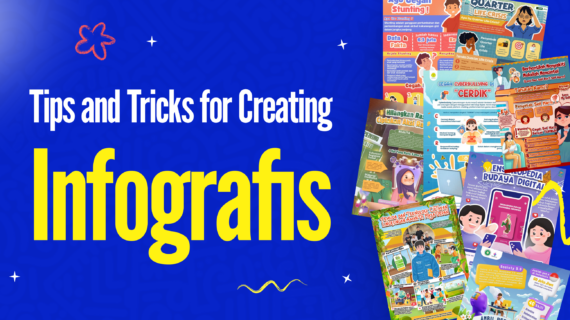Best Websites for Daily Creative Inspiration — Finding daily sources of inspiration is essential for anyone in a creative field, whether you’re a designer, artist, writer, or marketer. The internet offers a vast range of resources to fuel creativity and spark new ideas. Here, we’ve rounded up seven of the best websites to add to your daily lineup for creative inspiration. Each of these sites offers unique content and features that can stimulate your imagination and keep you inspired.
1. Behance
What It Offers: A hub for creatives to showcase and discover artwork across graphic design, photography, illustration, motion graphics, and more.
Why You’ll Love It: Behance is an ever-evolving showcase of creativity. By following artists, exploring curated projects, and delving into trending themes, you gain access to diverse styles and ideas from around the globe. The platform is updated daily, ensuring a constant flow of fresh content to keep your inspiration alive.
How to Use It for Inspiration:
- Search for specific design styles, niches, or industries to tailor your exploration.
- Browse featured works on the homepage or explore the “Moodboards” feature to gather ideas for specific projects.
- Follow your favorite designers to build a personalized feed of their latest creations.
2. Dribbble
What It Offers: A vibrant community dedicated to showcasing digital designs, including UI/UX, illustrations, animations, and branding.
Why You’ll Love It: Known for its high-quality visuals, Dribbble is a favorite among professionals and amateurs alike. With frequent updates from top designers worldwide, it’s a treasure trove of visual inspiration.
How to Use It for Inspiration:
- Explore “Shots” by category, popularity, or timeframe to discover trending designs.
- Follow designers whose style resonates with you to keep tabs on their latest work.
- Use Dribbble’s search filters to focus on specific industries, themes, or color palettes.
3. Pinterest
What It Offers: A versatile platform that enables users to discover, save, and organize ideas across various topics, including design, photography, fashion, and more.
Why You’ll Love It: Pinterest’s algorithm personalizes your feed based on your interests, making it an effortless way to find and save relevant ideas. Whether you’re working on a branding project or looking for home decor inspiration, Pinterest has it all.
How to Use It for Inspiration:
- Create boards for different projects or themes and organize your favorite pins.
- Use keywords to explore endless possibilities and discover visually similar ideas.
- Explore group boards or shared collections to collaborate with your team.
4. Awwwards
What It Offers: A platform that recognizes and celebrates excellence in web design and development.
Why You’ll Love It: Awwwards is the go-to source for discovering cutting-edge web design. Its featured projects are often lauded for their innovation in aesthetics, usability, and technology. The “Site of the Day” feature serves as an excellent way to get daily inspiration from the best in the industry.
How to Use It for Inspiration:
- Browse the “Winners” section to explore award-winning web designs.
- Dive into the blog for articles about design trends, techniques, and tools.
- Use the “Collections” feature to save your favorite designs for future reference.
5. Designspiration
What It Offers: A curated collection of visual content centered around design, architecture, art, and typography.
Why You’ll Love It: Designspiration combines functionality with inspiration, allowing users to create collections of saved images for future use. Its clean interface and powerful search options make it a perfect tool for organizing your creative ideas.
How to Use It for Inspiration:
- Search by color palette to find designs that fit your project’s tone.
- Explore trending content or themes tailored to your interests.
- Save and categorize images into personalized collections to keep your ideas organized.
6. Creative Boom
What It Offers: An online publication that promotes creativity through articles, interviews, design news, and curated inspiration.
Why You’ll Love It: Creative Boom stands out by blending visual inspiration with thoughtful industry insights. It features profiles of artists and designers across various fields, offering a deeper understanding of their creative processes.
How to Use It for Inspiration:
- Explore the “Inspiration” section for visual content across multiple disciplines.
- Read interviews with creatives to gain insights into their workflows and challenges.
- Stay updated on design trends and news to enrich your creative knowledge.
7. Instagram (Curated Accounts)
What It Offers: A vast social media platform where artists, designers, and creators share their work.
Why You’ll Love It: Instagram makes it easy to discover inspiring content tailored to your interests. From individual creators to design-focused accounts like @itsnicethat, @thejealouscurator, and @creators, there’s no shortage of visual brilliance to explore.
How to Use It for Inspiration:
- Follow themed accounts, designers, and studios whose work aligns with your style.
- Use hashtags such as #GraphicDesign, #Illustration, and #CreativeDirector to discover niche content.
- Save posts to categorized collections for quick access to your favorite finds.
Conclusion
These seven websites offer an endless supply of inspiration to keep your creative juices flowing every day. Whether you’re looking for visual content, project ideas, or insights from industry leaders, these platforms will help you stay inspired and engaged. Bookmark these sites, explore them daily, and watch your creative potential flourish.
Would you like to create amazing design with premmium asset at stocksvector?
- Search Enter the website URL : https://stocksvector.com/
- Create an account
- Copy paste link the resources you want (Website Templates)
- Click icon download “⬇️” and you’re done!
Read More:









